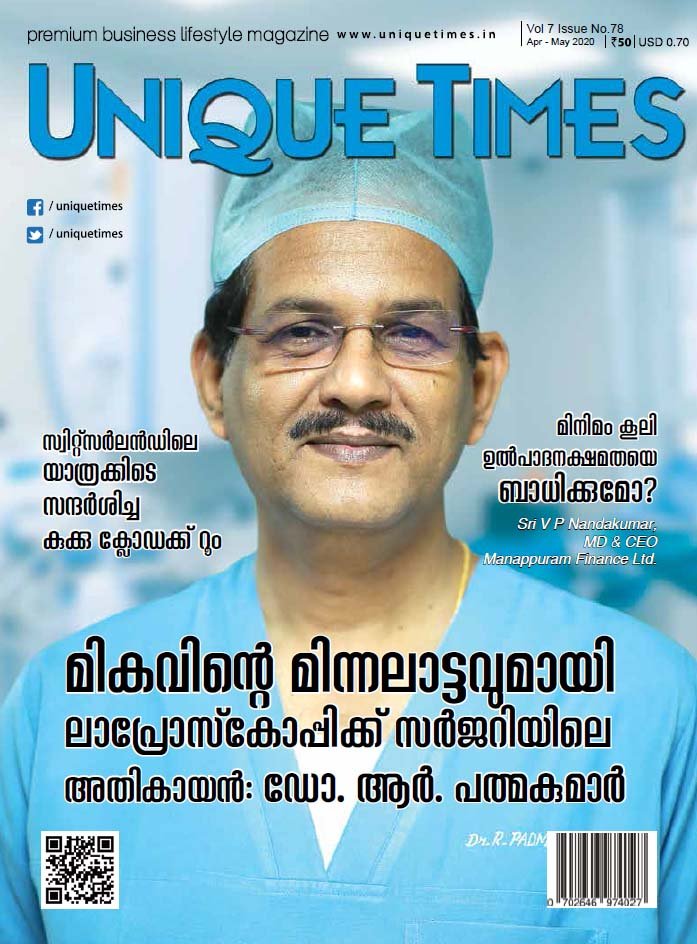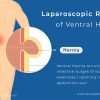Hiatus Hernia – Symptoms, Causes, Diagnosing, Treatment
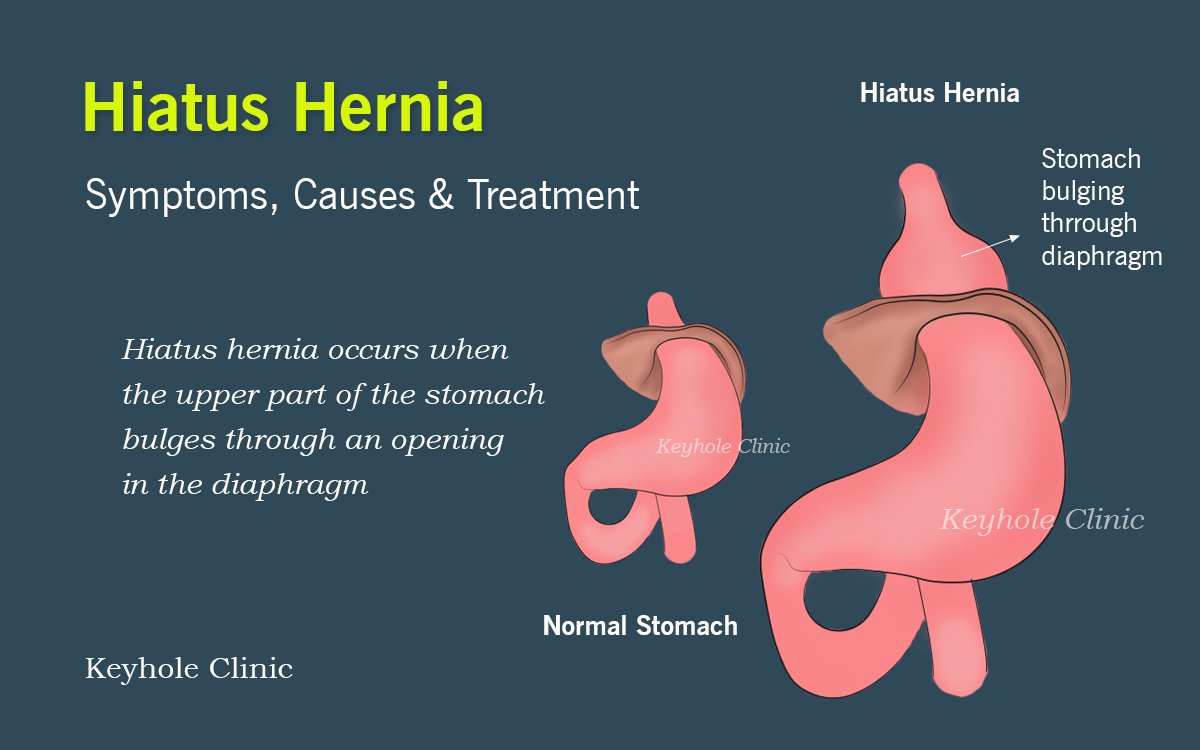
A hiatus hernia is a condition developed when the upper part of the stomach bulges through an opening in the diaphragm. The diaphragm is a muscle that separates the abdomen and chest. It has a small opening through which the food tube passes and connecting to the stomach. In a hiatus hernia, the stomach pushes up through the opening in the diaphragm and bulges into the chest. The bulging of stomach to the chest can cause food and acid going up into the esophagus causing heartburn.
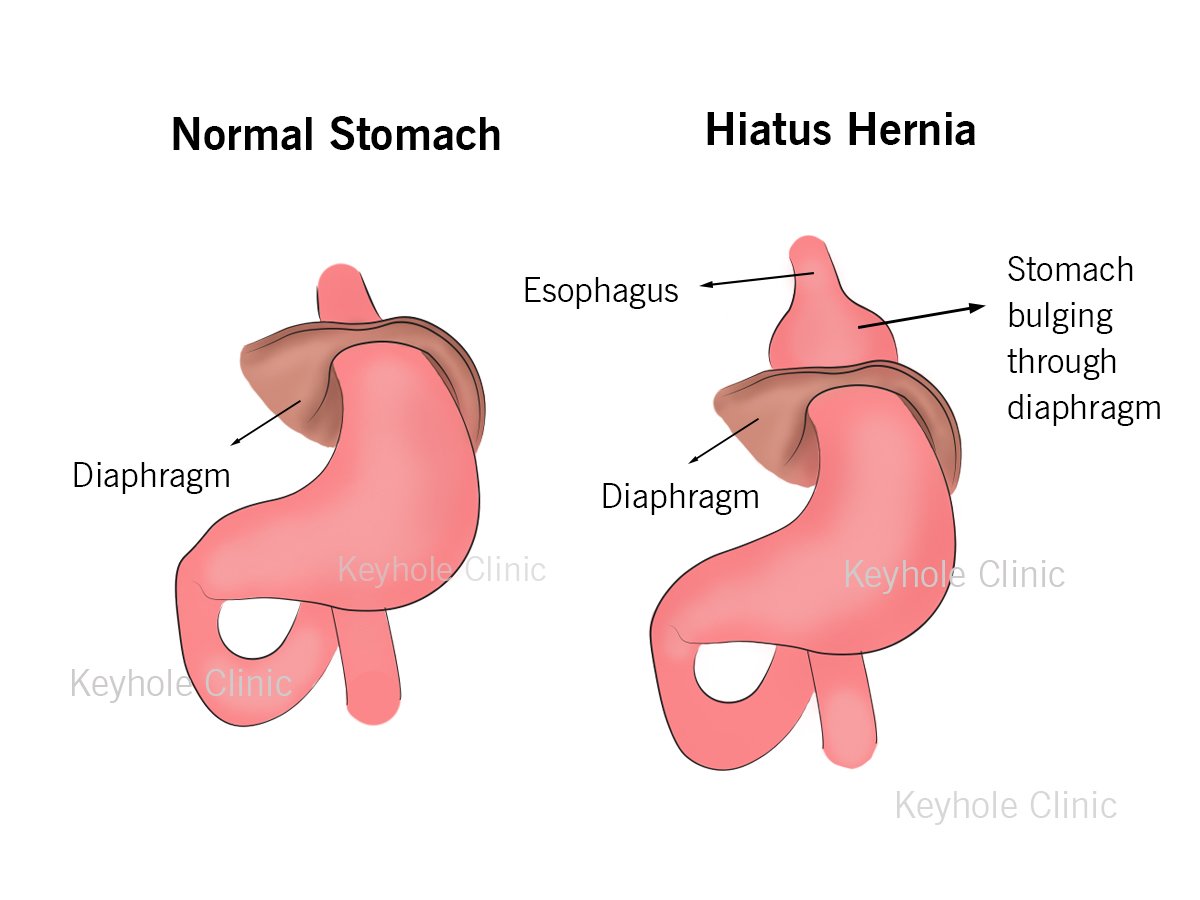
Hiatus Hernia occurs when the upper part of the stomach bulges through an opening in the diaphragm
Symptoms of hiatus hernia
- Heartburn
- Backflow of food and liquids into the mouth
- Backflow of stomach acid into the esophagus
- Difficulty in swallowing
- Chest or abdominal pain
- Shortness of breath
Causes
A hiatus hernia may be caused by:
- Age-related changes in the muscles of the diaphragm
- Injury to the area after trauma or surgery
- Birth defects with an unusually large hiatus
- Persistent and intense pressure on the surrounding muscles of the diaphragm
- Obesity
Diagnosing Hiatus Hernia
Endoscopic examination of the esophagus and the stomach will diagnose the condition. Other test includes x-ray with dye of the upper digestive system and esophageal manometry to measure the rhythmic muscle contractions and coordination and force exerted by the muscles of the esophagus when food is swallowed.
Treatments
Medications are prescribed to ease the symptoms including recurrent heartburn, acid refluxes and to reduce acid production. Medication along with lifestyle modification is necessary:
- Consume several smaller meals rather than a few large meals
- Avoid fatty or fried foods, tomato sauce, alcohol, chocolate, mint, garlic, onion, and caffeine that trigger heartburn
- Avoid lying down right after a meal
- Have the dinner at least two to three hours before bedtime.
- Maintain a healthy weight or reduce the excess weight
- Stop smoking and alcohol consumption
- Elevate the head end of bed while lying
- Perform any kind of physical activity or exercises at least 5 days a week
Surgical treatment
Options include pulling back the bulged stomach into the abdomen and reconstructing an esophageal sphincter.
Open Method: Less preferred due to difficulty to perform and severe pain the patient will experience later.
Laparoscopic Repair of Hiatus Hernia
It is the gold standard treatment for hiatus hernia with excellent result as the cuts are very small and handling of intestines is very minimal. If required 3 days of hospitalization and the procedure is done under general anesthesia. Short period of reduced activity is recommended – maybe for 10 days.
The patient can have soft diet initially and then normal diet in 2 weeks’ time. The patient may have to continue antacid drugs for a month or so.
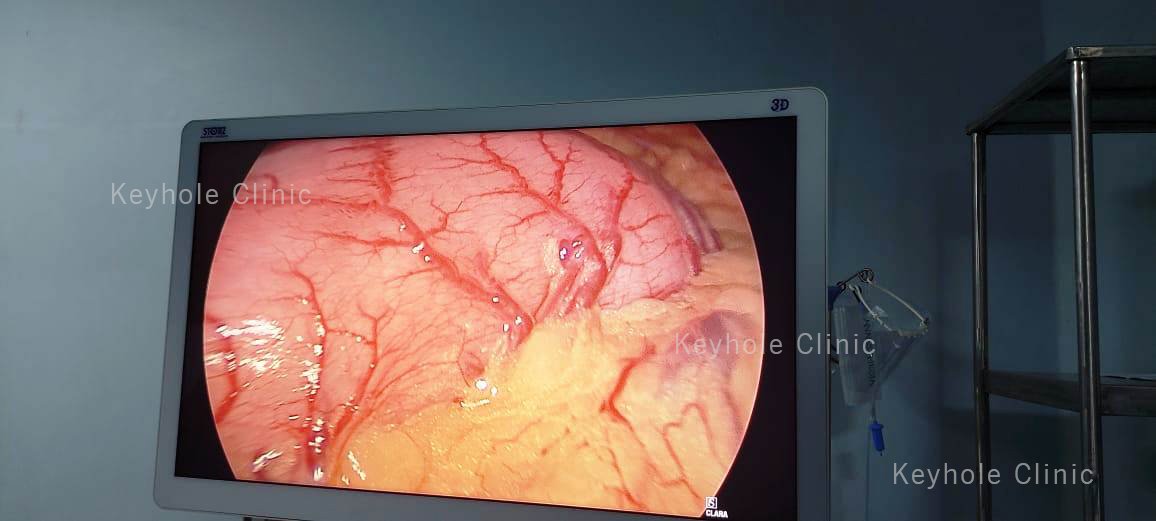
Hiatus Hernia – Stomach View

Hiatus Hernia – Wide Hiatus

Esophagus with Vagus Nerve – seen on monitor through laparoscope on repair of Hiatal Hernia
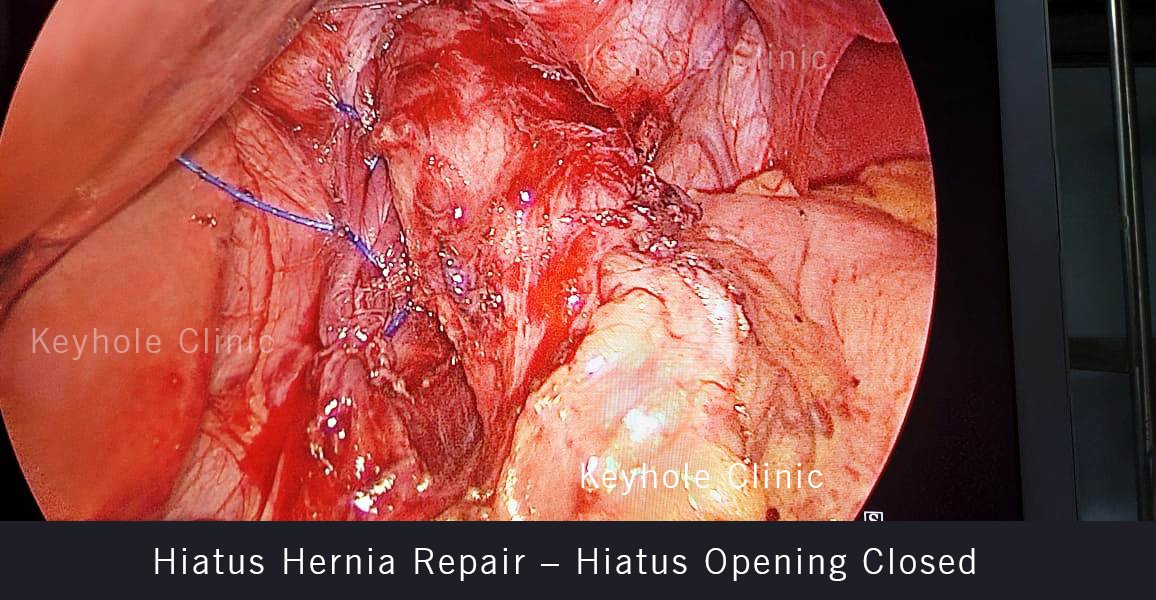
Hiatus Hernia Repair – Hiatus Opening Closed
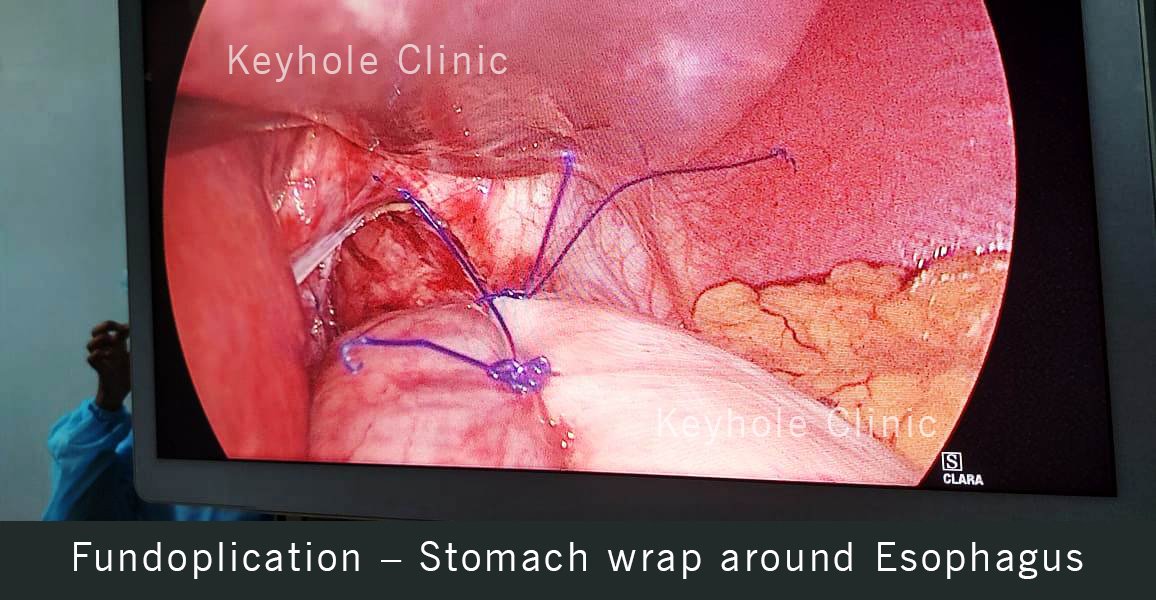
Fundoplication – Stomach wrap around Esophagus
Hiatus Hernia Treatment in India
Dr. R. Padmakumar performs Hiatus Hernia repair both laparoscopically as well as open procedure. Laparoscopic Treatment has advantages as it is done through keyhole incisions. The cost of hiatus hernia treatment in India is same as that as other parts of the world.
Other Types of Hernias
Other types of Hernias include:
- Inguinal hernia
- Ventral Hernia
- Obturator Hernia
- Femoral Hernia
- Umbilical hernia
- Incisional hernia
Inguinal Hernia
Inguinal hernia is a condition that occurs when abdominal tissues, such as part of the intestine, protrudes through a weak spot of the inguinal canal.
Ventral Hernia
Ventral Hernia can occur in any location of the abdominal wall as a bulge of abdominal tissues through a weak opening in the abdominal wall muscles. When the intestinal tissue gets caught up in the bulge and cannot be pushed back it is called Stangulaged Ventral Hernia.
Obturator Hernia
Obturator Hernia is a very rare type of hernia that occurs through an opening in the pelvis. The intestine bulges through the obturator foramen.
Femoral Hernia
Femoral hernia occurs in the groin junction when the tissues in the lower abdomen push through the upper thigh region.
Umbilical Hernia
Umbilical hernia occurs at the belly button (umbilicus). A loop of intestine pushes through the umbilical ring. in the groin junction when the tissues in the lower abdomen push through the upper thigh region.
Incisional Hernia
Incisional hernia occurs at the location of a previous surgical incision.
Video Talk in Malayalam
View animation – Hiatal Hernia meaning in Malayalam
View VideoAbout Dr. R. Padmakumar
Dr. R. Padmakumar is one of the Best Hernia Surgeon in India. He has been changing lives through Keyhole Surgery. He has got more than 30 years of hands-on experience in laparoscopic Surgery in major hospitals across India and has completed more than 7000 cases of Laparoscopic Hernia Surgeries. Dr. Padmakumar has trained more than 300 surgeons from all over the world the art of laparoscopic surgery especially Laparoscopic Hernia Surgery. Dr. Padmakumar is also hailed as one of the Best Bariatric Surgeon in India & UAE. He is renowned for new and improved treatment techniques and the first in the World to perform Scarless Bariatric Surgery with Tummy Tuck / Abdominoplasty. He is also one of the very few thyroid surgeons in India doing Endoscopic Thyroidectomy (scarless thyroid surgery).


-
Anal Fissure Treatment
- Piles / Hemorrhoids Treatment
- Varicose Veins Treatment
- Laser Treatment for Varicose Veins
- Diabetic Foot Treatment
- Gynaecomastia
